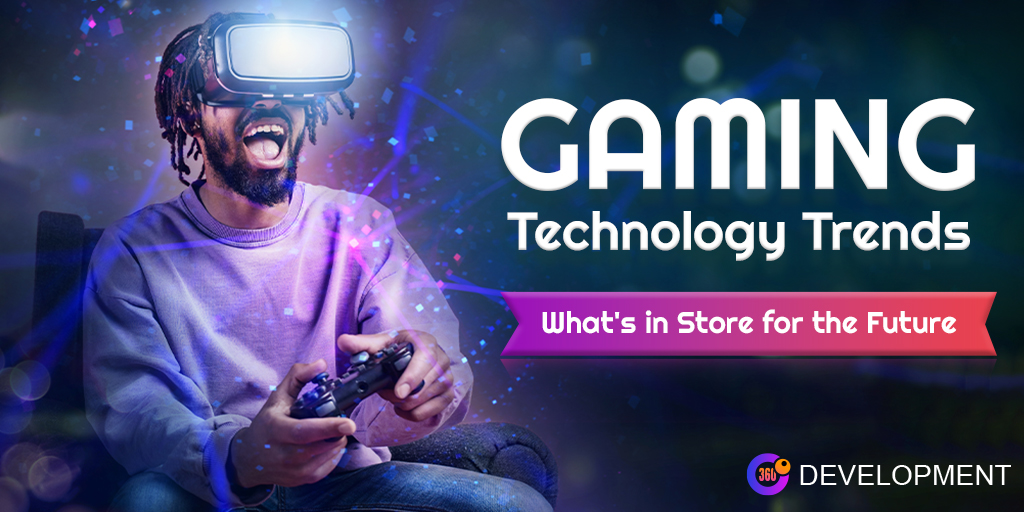Gaming Technology Trends: What’s in Store for the Future
Gaming technology has come a long way since the days of pixelated graphics and simple gameplay mechanics. As technology continues to advance at a rapid pace, the gaming industry is poised for groundbreaking innovations that will redefine the gaming experience. In this article, we will explore the emerging trends and technologies that are set to shape the future of gaming. From immersive virtual reality to seamless cloud gaming, let’s dive into the exciting possibilities that await gamers.
The Rise of Virtual Reality (VR)
Virtual Reality (VR) has been a buzzword in the gaming industry for several years, and its potential is only starting to be realized. With the advent of powerful VR headsets and motion-tracking controllers, gamers can now step into virtual worlds and experience games like never before.
Immersive Gameplay
VR technology provides a level of immersion that was previously unimaginable. Gamers can interact with their surroundings, physically move within the game, and experience a sense of presence like never before. This level of immersion opens up new possibilities for game developers to create unique and unforgettable experiences.
Enhanced Realism
VR allows for highly realistic visuals and audio, bringing games to life in ways that traditional gaming cannot. From exploring intricate virtual environments to engaging in realistic combat, VR technology bridges the gap between the real and virtual worlds, making gaming experiences more captivating than ever.
VR Beyond Gaming
While VR technology has made significant strides in gaming, its potential extends beyond the gaming industry. Virtual reality has the power to revolutionize various sectors, including education, healthcare, and training. Imagine learning complex concepts through interactive VR simulations or undergoing medical procedures in a virtual environment. The possibilities are endless.
Cloud Gaming: Gaming without Boundaries
Cloud gaming has been gaining momentum in recent years, promising a future where gamers can play their favorite titles without the need for expensive gaming hardware. By leveraging the power of cloud computing, players can stream games directly to their devices, eliminating the need for physical game installations and hardware upgrades.
Accessibility and Convenience
One of the primary advantages of cloud gaming is its accessibility. Gamers no longer need to invest in high-end gaming PCs or consoles to enjoy the latest titles. Instead, they can stream games to their smartphones, tablets, or low-spec computers, provided they have a stable internet connection. This opens up gaming to a wider audience and removes barriers to entry.
Seamless Cross-Platform Gaming
Cloud gaming also enables seamless cross-platform gaming. Players can start a game on one device and continue playing on another without losing progress. Additionally, cloud gaming facilitates cross-platform multiplayer, allowing gamers on different devices to play together seamlessly.
Evolving Infrastructure
As internet speeds and infrastructure continue to improve, the quality and accessibility of cloud gaming will only get better. With the emergence of 5G networks and advancements in cloud technology, the future of cloud gaming looks promising.
Artificial Intelligence (AI) and Procedural Generation
Artificial Intelligence (AI) is playing an increasingly significant role in the gaming industry. From intelligent NPCs (non-player characters) to procedural generation of game content, AI is enhancing game worlds and creating more dynamic and immersive experiences.
Intelligent NPCs
AI-powered NPCs are becoming more realistic and intelligent, making interactions with virtual characters feel more natural and engaging. NPCs can adapt to the player’s actions, learn from their behaviors, and provide more meaningful and personalized experiences.
Procedural Generation
Procedural generation is a technique that uses algorithms to generate game content dynamically. This allows for the creation of vast and diverse game worlds that are unique to each player. From procedurally generated landscapes to quests and missions, AI-driven procedural generation adds depth and replayability to games.
Augmented Reality (AR) and Mixed Reality (MR)
While virtual reality immerses players in a completely virtual environment, augmented reality (AR) and mixed reality (MR) combine virtual elements with the real world. These technologies are finding their way into gaming, offering new ways to interact with games and the surrounding environment.
Interactive Real-World Gaming
AR and MR enable gamers to overlay virtual elements onto the real world, creating interactive and immersive experiences. From catching virtual creatures in your backyard to solving puzzles in your living room, AR and MR bridge the gap between digital and physical gaming.
Enhanced Social Gaming
AR and MR also enhance social gaming experiences by allowing players to interact and collaborate in shared augmented spaces. Imagine teaming up with friends to tackle virtual challenges or competing against other players in an augmented reality sports game. These technologies have the potential to revolutionize multiplayer gaming.
Conclusion
The future of gaming is filled with exciting possibilities. From the immersive worlds of virtual reality to the convenience of cloud gaming, advancements in technology are reshaping the gaming landscape. Artificial intelligence is making games more intelligent and dynamic, while augmented and mixed reality are blurring the lines between the real and virtual worlds. As gamers, we can look forward to a future where our gaming experiences are more immersive, accessible, and interconnected than ever before.

